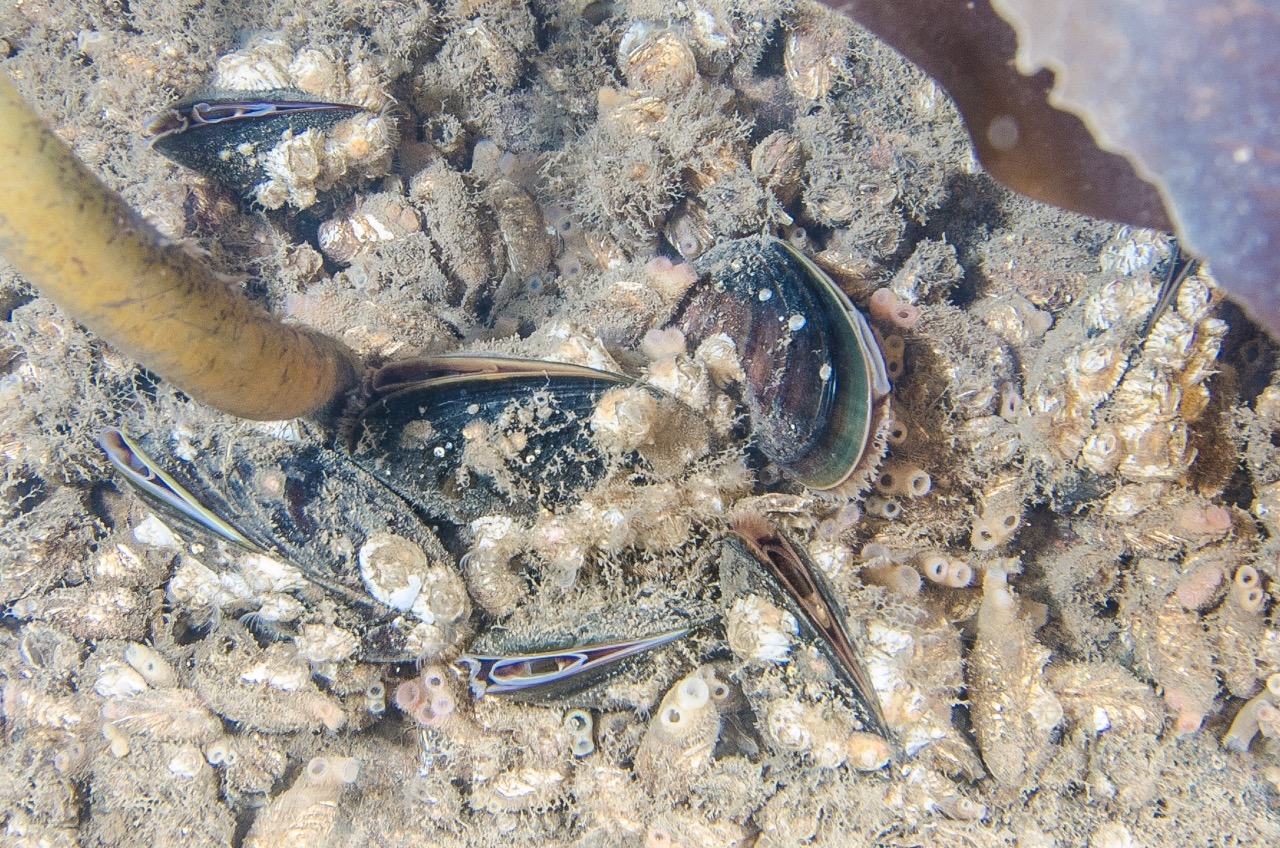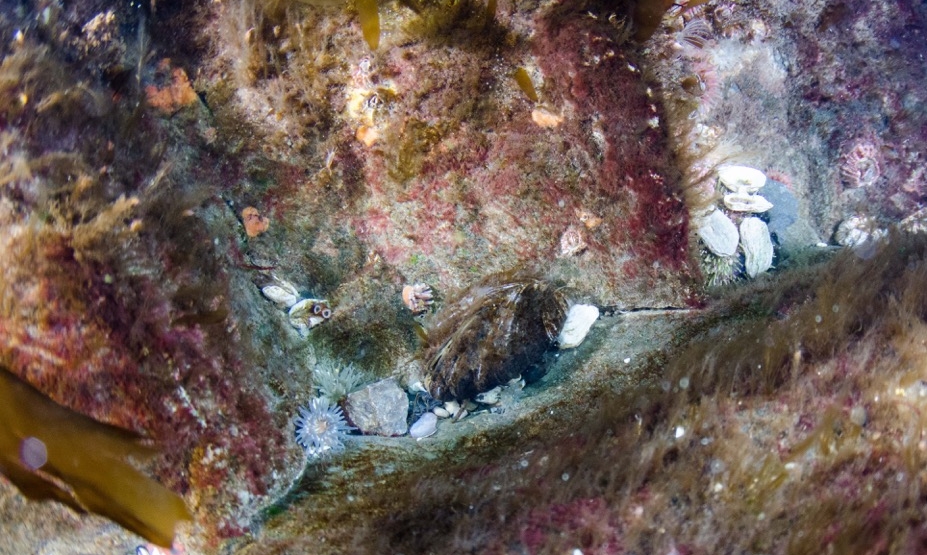The Blue Mussels Around Svalbard Have Come A Long Way
When blue mussels were discovered alive and well on Spitsbergen in 2004, it was a sensation, as mussels had been absent since the time of the Vikings. Closer study shows that some of the mussels found in Svalbard today come all the way from the Mediterranean. This astonishes scientists.
“The marine ecosystem up here in the north is constantly exposed to a natural invasion from the south. This is mainly because the northern part of the Gulf Stream system flows into our waters and keeps Svalbard’s fjords warm and ice-free through the long, cold winter
”
The warm water also brings living organisms from the south, such as the heat-loving, southern species Mytilus galloprovincialis, or the Mediterranean mussel.
“Ever since the first marine biologists started to examine our waters we have been aware of this influx of species, but it was a huge surprise for us to find that some mussels could come from as far south as the Mediterranean”, says Berge. The sensational finding was recently published in Evolutionary Applications after the UiT professor, in collaboration with colleagues from Greece and Russia, charted the arctic populations of mussels. The project received support from the Fram Centre Flagship programme Fjord and Coast.
Species distrubution of different types of mussels in Greenland, Svalbard, Iceland, northern Norway and Russia.
New mussels and new methods
The first observation of living mussels in Svalbard was made in 2004 at Sagaskjæret furthest out in Isfjorden. Since then, scientists have found mussels in several places in both Isfjorden and Kongsfjorden.
“Even the first time we observed mussels at Sagaskjæret, we assumed that this was a result of small larvae being transported northwards and into Isfjorden via the Gulf Stream system. We thought they came from the closest site, which means from the area around Lofoten”, says Berge
At that time, genetic studies indicated that it was the common mussel, Mytilus edulis, that had spread northwards from northern Norway. However, the scientists had insufficient data to draw firm conclusions. Now, more than ten years later, new mussel finds give them an opportunity for more exhaustive study.
“Using better data and new genetic methods, we are now able to determine where the mussels in Svalbard actually come from, and – not least – determine conclusively whether or not they belong to the species Mytilus edulis – the common mussel”, says Berge.
Relics from the previous Ice Age?
In fact, several alternatives to the “Gulf Stream” hypothesis have been proposed. Some scientists have claimed that the mussels found in the Arctic are ancient but previously undiscovered populations of mussels from North America – more specifically, the species called Mytilus trossulus. According to this hypothesis, they must have lived in Svalbard continuously since the last Ice Age, without being discovered. Other scientists have claimed that the mussels did not come to Svalbard through natural dispersion but rather as a consequence of shipping.
“So we gathered material from as many areas of the Arctic as possible, including Greenland, northern Norway, Svalbard, and the White Sea. Even though the relevant species of mussels are extremely similar on the outside and practically impossible to tell apart if they live in the same place, they have genetic markers that allow us to tell them apart relatively easily by studying their DNA”, explains Peter Leopold, a PhD student at UiT. “Genetic markers will also be able to tell us if any of these mussels are hybrids, that is, a mixture of species.”
Live mussels from Bykaia in Longyearbyen. Even though they all look alike, new studies show that these are probably individuals with genetic material from two or three different species. Photo: Peter Leopold / UiT The Arctic University of Norway
The mussels in Svalbard are often difficult to spot, well hidden among seaweed, bryozoans, hydrozoans and other organisms. This photo is from the area in which the mussels were first seen in 2004, Sagaskjæret at the mouth of Isfjorden.
Photo: Peter Leopold / UiT The Arctic University of Norway
Mussel hybrids
The scientists’ data show that the mussels found in Svalbard are not relic populations of the North American species but mainly carry the genetic material of the common North Atlantic mussel Mytilus edulis. The North American species was common mainly along the west coast of Greenland, which agrees with the earlier assumptions; mussels were a new species in Svalbard when they were discovered in 2004. However, a significant amount of genetic material from the Mediterranean was also found in all the populations examined. Only the populations taken from the more isolated areas of the White Sea and the coast of Greenland had a genetic structure where one of the three species was completely dominant. The others consisted of a mixture of species, with elements from the Mediterranean.
“It’s important to emphasise that we are not talking about a mixture of separate species (individuals living side by side), but a mixture of genetic material: hybrids or crossings of the three species. This means we’re not seeing a situation where different species come drifting in with the sea currents separately, but that they have probably come north gradually and in a manner that allows genetic mixing”, says Leopold.
The findings also refute the possibility of sporadic dispersion via shipping, since the genetic composition is fundamentally similar between separate populations in different fjords on Svalbard.
What is a natural condition?
Berge believes that the charting of mussels allows important questions concerning an administrative regime of Svalbard, which takes as its starting point conserving or preserving nature in its “natural” condition.
“What is actually natural when it so obvious that we do not even know which species live in more or less untouched areas of the Arctic?” he asks. “How do we manage a sea area that during our lifetime is going through enormous changes, both natural and man-made?”
He also believes that the findings indicate another important point: that it can be difficult to draw up clear boundaries in nature.
“A politically defined wolf zone makes as little sense to a ranging wolf as to a mussel larva caught in a sea current on its way north, regardless of whether it carries hereditary material from southern latitudes or not. Svalbard is, has always been, and always will be a hotchpotch of organisms with different backgrounds, and as temperatures, ice, and other important factors change, the marine system will also respond more or less immediately”, Berge concludes.
Further reading:
Mathiesen SS, Thyrring J, Hemmer-Hansen J, Berge J, Sukhotin A, Leopold P, Bekaert M, Sejr MK, Nielsen EE. (2016) Genetic diversity and connectivity within Mytilus spp. in the subarctic and Arctic. Evol. Appl. 10: 39-55, doi: 10.1111/eva.12415
The author with fossil shells from Rijpfjorden in Svalbard. Mussels lived in Svalbard in warm periods after the last Ice Age, but which species lived here then? It has not been possible to isolate DNA from these fossils. Photo: Colin Griffiths / SAMS





